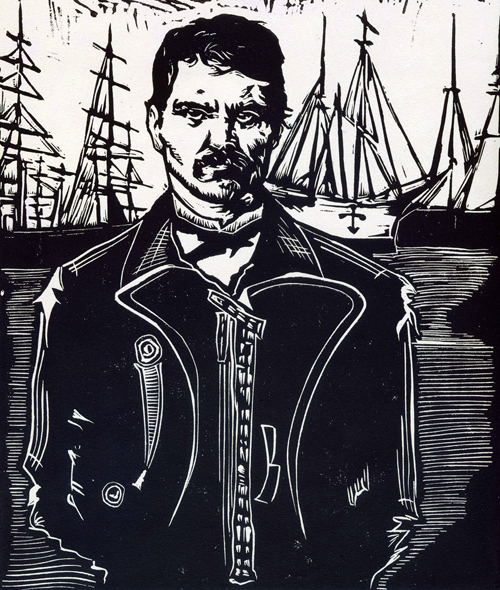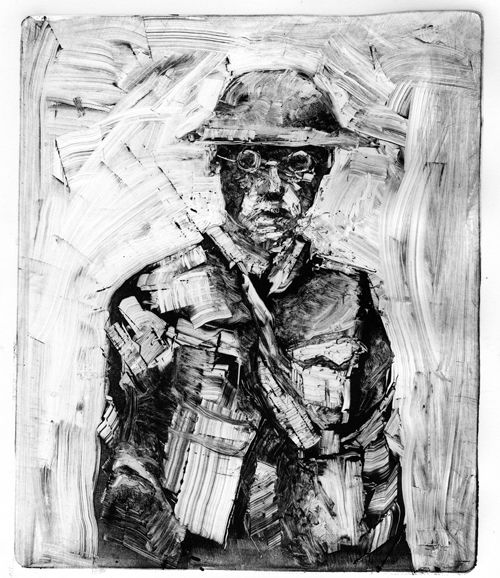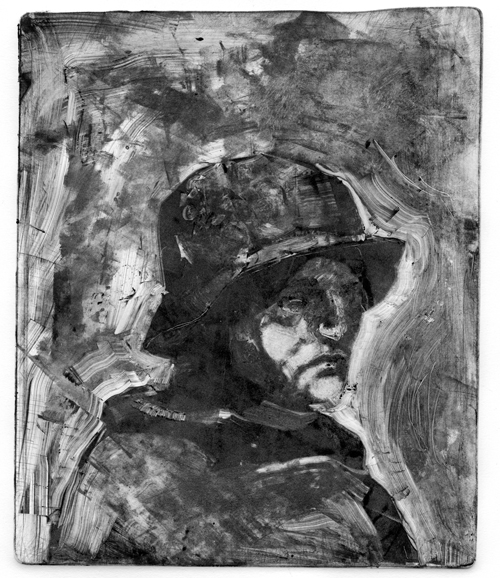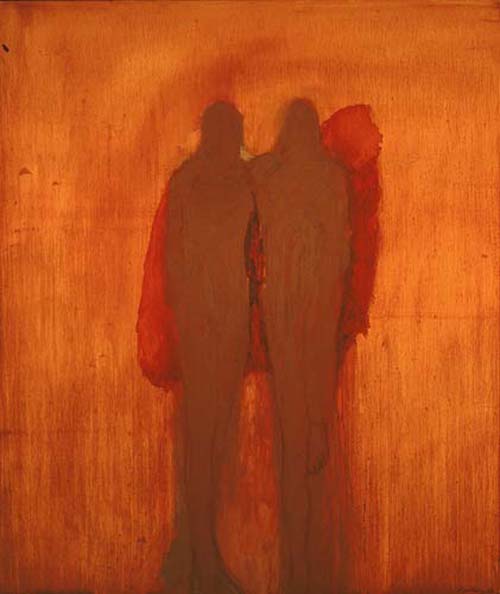Relief printing is one of the oldest forms of printmaking and accessible to everyone, even those without a press. In relief printmaking, the uppermost surface of the material is inked-up, and printed from, as with a rubber stamp. The cut marks below the surface do not receive any ink and therefore will not print.
Linocut technique: a variant of woodcut in which a sheet of linoleum (sometimes mounted on a wooden block) is used for the relief surface. A design is cut into the linoleum surface with a sharp knife, V-shaped chisel or gouge, with the raised (uncarved) areas representing a reversal (mirror image) of the parts to show printed. The linoleum sheet is inked with a roller (called a brayer), and then impressed onto paper or fabric. The actual printing can be done by hand or with a press.
Although linoleum as a floor covering dates to the 1860, the linocut printing technique was used first by the artists of Die Brücke in Germany between 1905-13 where it had been similarly used for wallpaper printing. They initially described their prints as woodcuts however, which sounded more respectable.
As the material being carved has no particular direction to its grain and does not tend to split, it is easier to obtain certain artistic effects with Lino than with most woods, although the resultant prints can lack the often angular grainy character of woodcuts and engravings. Lino is much easier to cut than wood; especially when heated, but the pressure of the printing process degrades the plate faster and it is difficult to create larger works due to the material’s fragility.


















Nil Santana on Pixel-objects
11:49 am, 04.30.12
You’re right. I had seeing that one as well. Both are very interesting in the sense that they deal with our perceptions, and how low/simplified representations can be.
Nil Santana on Read, and comment: is printmaking dead?
10:04 pm, 02.21.12
I am really enjoying the comments so far. Eventually, we all agree that printmaking is not dead. I also subscribe to the idea that its practice has changed throughout the years, as Shawn has also pointed out how other areas such as photography and painting are influenced by technological advancements. Keep it in mind as we’ll advance thru other techniques, until we reach the point where computer and old processes cross.